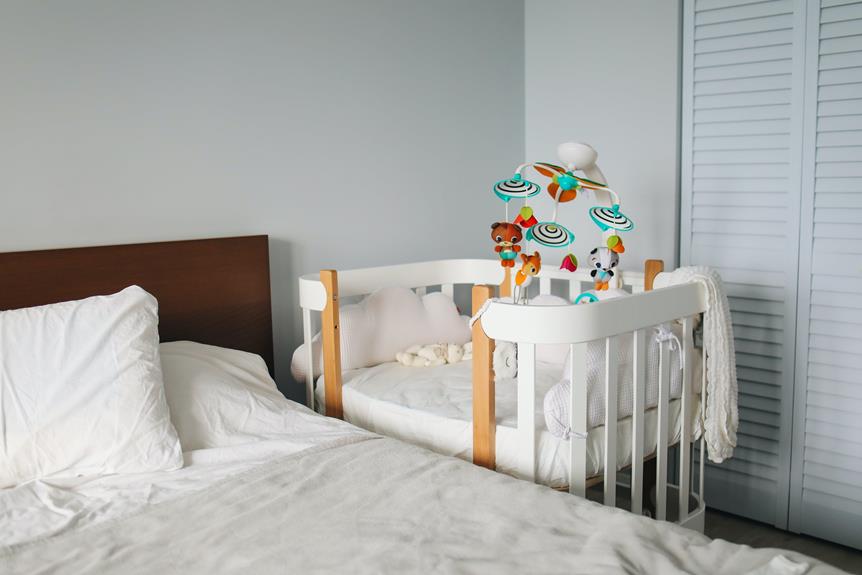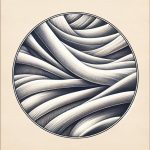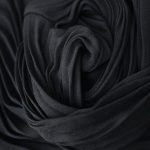Wondering which fabric is best for your summer wardrobe? You may not know that poplin and linen are two popular choices with unique characteristics.
Poplin, a tightly woven fabric, offers a smooth, crisp texture perfect for a polished look.
On the other hand, linen, known for its breathability and natural wrinkles, exudes a relaxed, effortless vibe.
Understanding the differences between these fabrics will help you make an informed decision based on your style and comfort preferences.
In this guide, we'll explore the distinct traits of poplin and linen, their durability, styling options, and care requirements, empowering you to masterfully curate your summer wardrobe.
Key Takeaways
- Poplin is a tightly woven fabric with a smooth and crisp texture, while linen is highly breathable and moisture-wicking.
- Linen is a sustainable and eco-friendly fabric that becomes softer and more comfortable with each wash, while poplin is versatile and wrinkle-resistant.
- Linen offers excellent durability and holds up well over time, although it requires more care and is prone to wrinkles. Poplin, on the other hand, has a strong, tight weave and is easy to maintain with less wrinkling.
- When choosing between poplin and linen, consider factors such as personal style, desired level of formality, and care preferences for your summer wardrobe.
Characteristics of Poplin
Poplin's durability makes it a popular choice for summer clothing. The fabric is breathable and lightweight, making it ideal for hot and humid weather. Its plain weave gives it a smooth texture and a crisp, clean look. Poplin is known for being versatile and wrinkle-resistant, making it a practical option for travel or all-day wear. Its ability to maintain its shape and resist wrinkles makes it a go-to choice for those seeking a polished appearance without the hassle of constant ironing.
Poplin's breathability comes from its tight weave, allowing air to circulate and keep the body cool. This feature makes it a top pick for summer shirts, dresses, and skirts. The lightweight nature of poplin adds to its appeal, as it drapes beautifully and feels comfortable against the skin. Its versatility shines through in its ability to be used for both casual and formal wear, making it a staple in any summer wardrobe.
Advantages of Linen
When considering your summer wardrobe, linen's breathability and natural moisture-wicking properties make it a top choice for staying cool in hot and humid weather. Linen is highly breathable, allowing air to flow through the fabric, keeping you feeling fresh and comfortable. Its natural fibers have the ability to absorb moisture and quickly evaporate it, leaving you dry and cool even on the hottest days.
One of the key advantages of linen is its sustainability. Linen is made from the flax plant, which requires far less water and pesticides to grow compared to other crops used for fabric production. As a result, linen is considered an eco-friendly and sustainable choice for your wardrobe.
Moreover, linen's durability and timeless appeal make it a long-lasting investment. The fabric becomes softer and more comfortable with each wash, adding to its value and reducing the need for frequent replacement.
Durability Comparison
You'll want to compare the durability of linen to that of poplin when choosing fabrics for your summer wardrobe. Durability comparison is crucial when evaluating the fabric strength of these two materials. Linen is known for its exceptional durability, making it a popular choice for summer clothing. However, poplin, with its tight weave and strong fibers, also offers impressive durability. To help you make an informed decision, let's compare the fabric strength of linen and poplin in a side-by-side table.
| Durability Comparison | Linen | Poplin |
|---|---|---|
| Fabric Strength | Excellent durability, holds up well | Strong, tight weave, offers durability |
| Maintenance | Requires a bit more care, prone to wrinkles | Easy to maintain, less prone to wrinkles |
| Longevity | Known for its longevity and ability to withstand wear | Offers good longevity and holds up well over time |
Both linen and poplin are durable fabrics, but each has its own unique strengths. Linen is known for its excellent durability and longevity, while poplin's tight weave provides strength and easy maintenance. When choosing between the two, consider your lifestyle and how much maintenance you're willing to put into your summer wardrobe.
Styling Options
For versatile and stylish summer outfits, consider mixing and matching poplin and linen pieces to create a variety of looks. When it comes to styling options, both poplin and linen offer endless possibilities.
To create a cohesive and put-together ensemble, focus on color coordination. Pair a lightweight linen shirt with tailored poplin shorts for a relaxed yet refined look. If you're aiming for a more casual vibe, mix a poplin top with linen trousers for a breathable and effortlessly cool outfit.
Don't be afraid to play with different textures and colors within the same fabric. For example, layering a linen blazer over a poplin dress can add dimension and sophistication to your overall appearance.
To elevate your style, accessorize with statement pieces like a woven belt or a straw hat, which complement the natural feel of both fabrics.
Care and Maintenance
To keep your poplin and linen garments looking their best throughout the summer, it's important to follow specific care instructions for each fabric.
When it comes to washing your poplin pieces, opt for a gentle cycle with cold water to prevent shrinking. Use a mild detergent and avoid bleach to maintain the fabric's integrity.
For linen, it's best to hand wash or use the delicate cycle with a gentle detergent. Always check the care label for any specific instructions.
After washing, proper ironing techniques are crucial for both poplin and linen. For poplin, iron while slightly damp using a medium to high heat setting. Be sure to check the garment's care label for any temperature restrictions.
Linen should be ironed when damp or with steam to ease out wrinkles. A medium to high heat setting is suitable for linen as well, but always test a small, inconspicuous area first to avoid damage.
Frequently Asked Questions
Can Poplin or Linen Fabrics Be Easily Dyed or Printed With Patterns?
Yes, both poplin and linen fabrics can be easily dyed using various dyeing techniques. Additionally, they can be printed with patterns using different printing methods, providing you with a wide range of design options for your summer wardrobe.
Are There Any Environmental or Ethical Considerations to Keep in Mind When Choosing Between Poplin and Linen?
When choosing between poplin and linen for your summer wardrobe, consider the environmental impact and ethical sourcing. Opt for sustainability and fair trade. Both fabrics have their own benefits, but making an informed choice is essential.
How Do Poplin and Linen Fabrics Perform in Terms of Wrinkle Resistance?
When it comes to wrinkle resistance, poplin and linen differ. Linen tends to wrinkle easily, so it's important to hang or fold it carefully to avoid creases. Poplin, on the other hand, is more wrinkle-resistant and may require less ironing.
Are There Any Specific Health Benefits or Drawbacks Associated With Wearing Poplin or Linen in Hot Weather?
In hot weather, wearing breathable fabric like poplin or linen can offer health benefits by keeping you cool. However, drawbacks such as skin irritation may occur for some. It's essential to choose the fabric that suits you best.
What Are the Differences in Cost Between Clothing Made From Poplin and Clothing Made From Linen?
When comparing clothing made from poplin and linen, you'll find that linen tends to be more expensive due to its limited availability. However, it offers excellent breathability and moisture-wicking properties, while poplin is known for its durability and easy care instructions.







